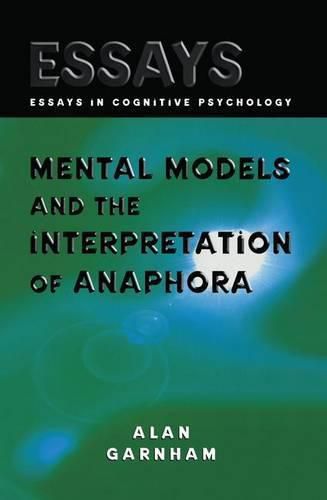Readings Newsletter
Become a Readings Member to make your shopping experience even easier.
Sign in or sign up for free!
You’re not far away from qualifying for FREE standard shipping within Australia
You’ve qualified for FREE standard shipping within Australia
The cart is loading…






The interpretation of anaphora - how we interpret expressions such as definite pronouns (he, she, it) and verbal elliptical phrases (such as did so, too ) in the course of ordinary conversation or reading - is an important aspect of language comprehension.
In this book the author examines the research and evidence on anaphor interpretation within the context of the mental models theory of comprehension, arguing that the notion of a mental model is essential to the detailed description of the processes of anaphor resolution. The general philosophy of the mental models approach and the nature of mental models themselves and their role in language processing is discussed, followed by a review of methodological issues that bear on the interpretation of psychological research findings. Against this background, the author’s own research on areas such as deep and surface anaphora, reference into anaphoric islands, the role of implicit causality in anaphor resolution and the use of pronouns to refer to characters introduced by stereotyped role names is presented. At all times the author’s research is set within the context of the general literature on anaphor resolution derived from the disciplines of linguistics, psycholinguistics, philosophy and computational linguistics, ensuring that the book will be of interest to advanced students and researchers in these fields.
$9.00 standard shipping within Australia
FREE standard shipping within Australia for orders over $100.00
Express & International shipping calculated at checkout
The interpretation of anaphora - how we interpret expressions such as definite pronouns (he, she, it) and verbal elliptical phrases (such as did so, too ) in the course of ordinary conversation or reading - is an important aspect of language comprehension.
In this book the author examines the research and evidence on anaphor interpretation within the context of the mental models theory of comprehension, arguing that the notion of a mental model is essential to the detailed description of the processes of anaphor resolution. The general philosophy of the mental models approach and the nature of mental models themselves and their role in language processing is discussed, followed by a review of methodological issues that bear on the interpretation of psychological research findings. Against this background, the author’s own research on areas such as deep and surface anaphora, reference into anaphoric islands, the role of implicit causality in anaphor resolution and the use of pronouns to refer to characters introduced by stereotyped role names is presented. At all times the author’s research is set within the context of the general literature on anaphor resolution derived from the disciplines of linguistics, psycholinguistics, philosophy and computational linguistics, ensuring that the book will be of interest to advanced students and researchers in these fields.